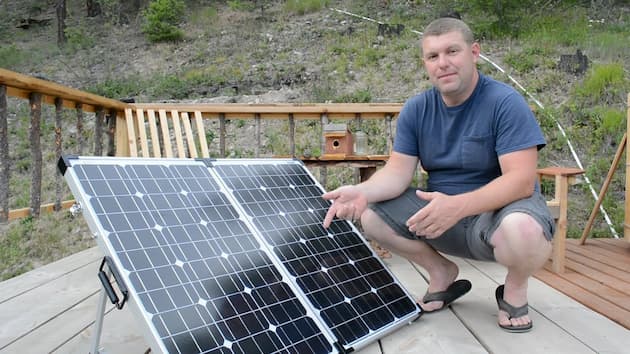When you’re trying to picture the perfect holiday, what do you see? Are you exploring the beautiful Australian outback, or relaxing at the beach? If you enjoy travelling off the beaten track and exploring the remotest places Australia has to offer, getting enough power to run all of the appliances you have inside your RV can be a problem. Powering them with a generator can be expensive, smelly and noise, and it isn’t as great for the environment. Luckily, solar systems for RVs have become quite affordable in the past several years, and they’re more efficient than ever. Off grid solar systems are the ideal addition to any RV set up.
But how do you decide on the best RV solar power system, and how do you calculate off grid solar systems? There are quite a few things you need to consider in order to get the answer to these questions. Let’s start by talking about the basics of RV off grid solar systems.
Although it may seem daunting at first, mobile solar power systems are quite simple. There are four basic components – solar panels, battery, regulator and inverter. The solar panels convert sunlight into DC electricity, which charges the battery. The regulator makes sure the battery is properly charged and is kept safe from overcharging or over-discharging. The battery obviously stores the energy harnessed by the solar panels and can directly power DC appliances. And lastly, the inverter converts DC energy to AC energy in order to power AC appliances. Some DC appliances can be connected straight to the regulator in order to protect the battery.

The first thing you need to decide on is whether you want mounted or flexible solar panels. Mounted panels are fixed to the roof, and once installed, it’s difficult to remove them. However, that keeps them secure when there’s bad weather. They often require professional installation and are usually more expensive than flexible panels. Flexible panels, on the other hand, are more affordable, portable and easier to move around. On the downside, they’re more prone to damage in harsher weather and are more likely to be stolen by thieves. The fact that they’re portable allows you to move them in such a way that they’re exposed to direct sunlight, thus gathering slightly more power.
Next, you have to decide between monocrystalline and polycrystalline panels. Monocrystalline panels are more efficient but are also more expensive. They can lose their efficiency when they’re partially shadowed, but they work better in low-light conditions and have the longest life expectancy. Polycrystalline panels are more cost-effective, as they’re much more affordable but slightly less efficient. On the downside, they require more roof space to produce as much power as monocrystalline panels.
Once you’ve figured out your solar panel requirements, it’s time to think about the logistics. The solar regulator is one of the most important pieces of the system. It’s a small box located between the panels and the battery. There are two basic types of solar regulators – Maximum Power Point Tracking and Pulse Width Modulation.

PWM regulators are considered the standard type, as they’re simple and inexpensive. They work by reducing the amount of power that goes into the battery, slowing down before the battery reaches full capacity. Once full, the regulator maintains a trickle state, meaning it supplies a very small amount of power to keep the battery full. These regulators are best suited for small solar systems, such as caravan systems, and they work great with low voltage panels and small batteries.
MPPT regulators, on the other hand, are more expensive and complex, but they work in a similar fashion. What sets them apart is their ability to pair non-matching voltages from the panels and batteries, adjusting their input to take in the highest amount of power from your system. They can also adjust their power output to match the battery, making them more efficient than PWM regulators.

Although MPPT regulators are more effective, it’s important to weigh in both options. Is an MPPT regulator worth the money for your motorhome or caravan setup? MPPT regulators can cost twice the money that a PWM regulator costs, so that’s something to think about. MPPT regulators are usually recommended for full home solar systems, but they’re not essential for smaller systems. However, they’re definitely worth considering.
Lastly, you need to think about connecting and wiring the solar system. Some panels come with MC4 connectors, allowing your system to have waterproof wiring, which is essential. There are also adapters that allow you to connect two cables together, which are ideal for testing if there’s a fault, and they also allow you to connect a number of panels to a single set of wires. Solar regulators require a specific wire thickness, and it’s advisable to use pre-made battery leads if you’re connecting multiple batteries together.


